What is low-code ETL?
ETL is an essential data warehousing process in which data extracting (E), transforming (T), and loading (L) proceed without coding entirely. You can say ETL is the backend of data integration.
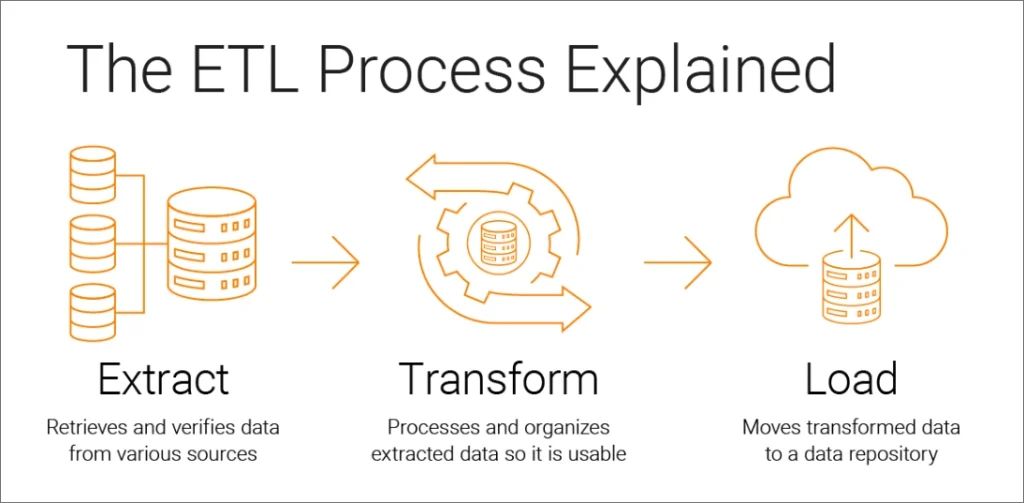
Low-code ETL tools are designed to achieve the maximum process, allowing developers to insert additional codes to get it working efficiently. These tools run on cloud databases and have a drag-and-drop interface, allowing even non-tech users to use them properly. Using low-code ETL tools can elevate one’s business strategy formation and decision-making.
Differences between manual ETL and low-code ETL
| Criteria | Manual ETL | Low code ETL |
|---|---|---|
| Performance | – Limited customization – More time-consuming to completion – Lower overall efficiency of the ETL process | – Customized process based on organizational needs – Customized volume of data sources and rule for the transformation process – Contains predefined and modifiable code |
| Scalability | – Unscalable – Limitedly designed for specific cases – Code rewriting and new code are needed when a new data source is added | – Scalable, less dependent on a specific case – Solutions and ETL cases can be used for multiple projects – Additional RAM is allowed |
| Customizations | – Flexible customization for data pipeline – Day-long customization process | – Contains some higher level of customization – Faster in delivering results, just within hours – Little to no restriction |
| Data source | The complexity of the process corresponds with the number of data sources connected | Customizable number of databases without any additional coding required |
| Workflow automation | – Manual attachment and extensive code are required for databases and repositories – Complicated workflow scheduling | – Manual coding is not required in data pipelining – Workflows are automated |
| Usage | – Complicated usage, even for the professionals – Long data processing – Possible chance of error in coding can ruin data integration process | – Easy usage – Minimal process plus providing locations for the data pipelines |
| Maintenance | – Repeated recoding to ensure the code works for every scenario – Professional proficiency in multiple computer languages is required – Expert help and outsourcing are needed to get work done | – Professional proficiency in multiple computer languages is not required – Easy data pipeline creation with the drag-and-drop feature – Autosaved data flow |
| Technical advancement | Must redo the entire coding process for a newer code with a manual coding process | Data map upgrade and transformation are available |
| Cost | $110,000/engineer/year | $50,000 – $80,000 |
| Use cases | Best for mildly developed databases and non-urgent required information | Best for extensive databases with excessive coding work required |
Types of low-code ETL
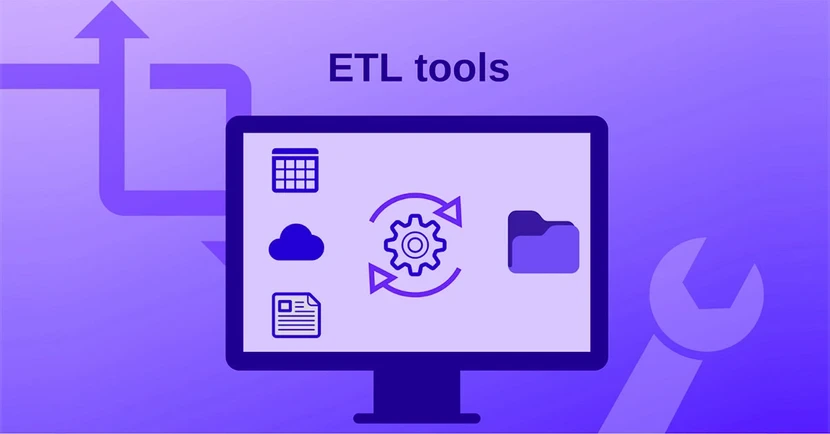
1. Enterprise ETL
Enterprise Low-code ETLs are developed and supported by commercial organizations. It helps said organizations expand the learning cover and offer customers a graphical user interface, easy-to-use capabilities, and other features for more accessibility and straightforward usage.
Compared with other low-code ETL tools, they charge a higher price for those extensive features. However, it is still favored by larger organizations due to its capabilities in data integration, especially when there is a regular stream of data inflow and a high need for information from data analytics within data pipelines.
2. Open-source low-code ETL
You can access and alter the codebase according to your projects using an open-source ETL tool. Most of them are free and available on GitHub for download. Still, these programs’ functionality and simplicity of use vary greatly.
Unlike manual ELT, which requires an in-house developer to modify the code, open-source low-code ETL is more customizable than other ETL solutions.
3. Cloud-based ETL
Cloud-based low-code ETL tools leverage cloud technology to allow high latency, resource availability, and elasticity. It also lets computing resources scale while meeting organizational demands.
However, cloud-based ETL tools have their downside. They can only work with the environment of the cloud server.
Advantages of low-code ETL
- Cost-effectiveness: Most low-code ETL tools are more accessible to deploy and take fewer resources. This eventually lowers the long-term maintenance expenditures;
- Flexibility: This is the biggest advantage of low-code ETL tools. Users can quickly solve problems and eliminate the need for manual programming of complex transformations;
- Scalability: These ETL tools offer scalability to fit any company or data set size. Moreover, they facilitate the integration of numerous systems;
- Automated capabilities: This is a feature that manual ETL cannot replicate. With low-code ETL tools, workflows are automated, errors are reduced, and overall accuracy and efficiency are leveraged. Organizations can now focus on their core business goals instead of dealing with mundane tasks;
- Simple system integrations: Data engineers have ready-to-use components that can be swiftly combined into sophisticated pipelines. They can quickly design end-to-end data flows without writing code for each stage. These types of solutions open opportunities for anyone who wants to rapidly and simply explore their own ideas around data modification and exploration.
With all these benefits, you can clear your headspace for demanding business strategy and innovations. Learn other ways that Low-code can help your business!
Low-code ETL still has downsides
- Error management difficulties: Process automation might expose an organization to a greater risk of errors due to a lack of human oversight or manual quality checks. Sometimes, if not identified quickly and corrected, suboptimal judgments made by auto-generated code might result in costly errors;
- Scalability issues: When using automated ETL, you should pay attention to scalability issues. If the system must process excessive data at once, it can get slow or crash entirely due to insufficient coding complexity. Also, the underlying automated code might cause difficulties in diagnosing scalability issues.
Best low-code ETL tools to use
| Platform | Price | G2 Rate |
|---|---|---|
| Integrate.io | – Has free version – $15,000 to $25,000/year | 4.3/5 ⭐ |
| Keboola | – Has free version – Enterprise package for advanced features | 4.7/5 ⭐ |
| Matillion | – Free trial – From $2 to $2.70/ credit (you can see how a credit is counted here) | 4.3/5 ⭐ |
| AppMaster | – Free version – $165 to $855/ month | 4.9/5 ⭐ |
| Microsoft Power Platform | $5 to $20/ per user/ month | 4.3/5 ⭐ |
1. Integrate.io
Using APIs, webhooks, and cloud-based platforms, Integrate.io allows you to connect data flows to existing apps and data warehouses. This low-code tool can handle ETL and ELT well. Besides low-code, it offers no-code solutions and great technical support staff.
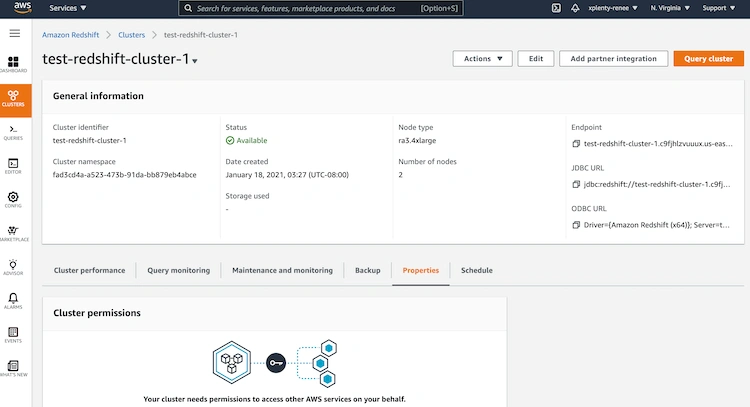
However, Integrate.io’s learning curve is steep, as learning about the product and its features can be time-consuming and complicated. Users cannot use Integrate.io for data replication and real-time data synchronization as it lacks the necessary features. Logs are complicated to interpret and troubleshoot (particularly when ETL procedures fail).
Integrate.io is considered best for engineers who need an easy-to-code ETL platform without going down to the core of the ETL process and failures.
2. Keboola
Keboola is an open-source low-code ETL that assists you in automating all of your data processes. Its main feature is the ability to create and automate ETL, ELT, and reverse ETL data operations. Besides ETL, Keboola offers enterprise data security, data governance, DataOps, and many others.
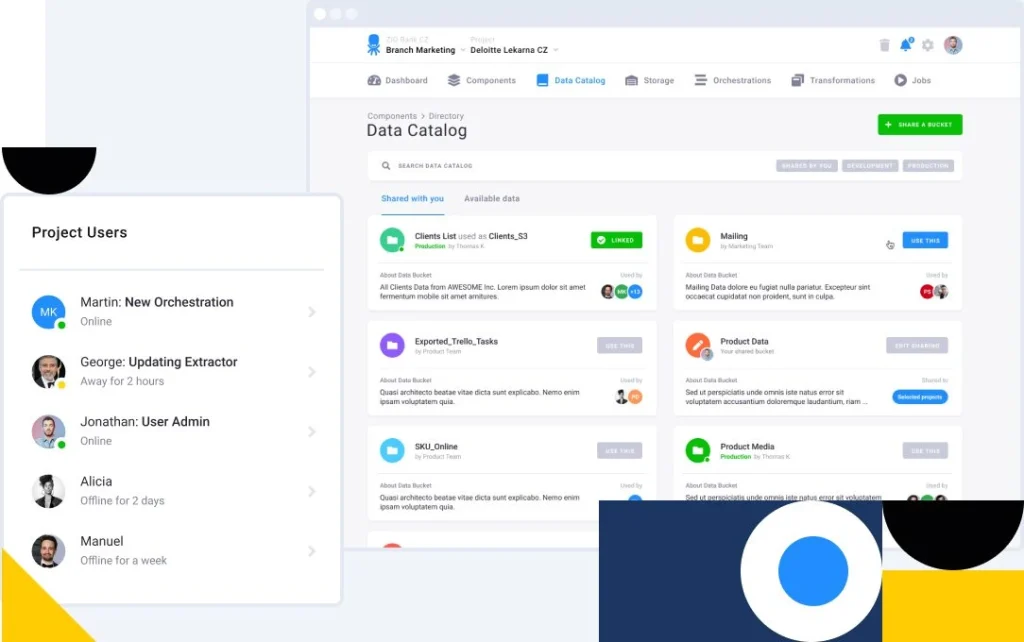
Keboola combines high performance and usability for engineers and non-technical domain experts. The low-code ETL tool is easy to use with end-to-end automation and full extensibility. Plus, users can access the massive library of pre-built components.
However, it is not a great tool for real-time data flows. If you are a part of a technical data team or a data-driven business expert, this is the low-code ETL tool for you.
3. Matillion
With an intuitive drag-and-drop user interface and low-code support, Matillion ETL is a data integration tool that can create ETL data processing. Users can quickly scale their data operation with Change Data Capture (CDC) and batch processing. Matillion also fully supports ETL, ELT, and reverse ETL with many use cases.
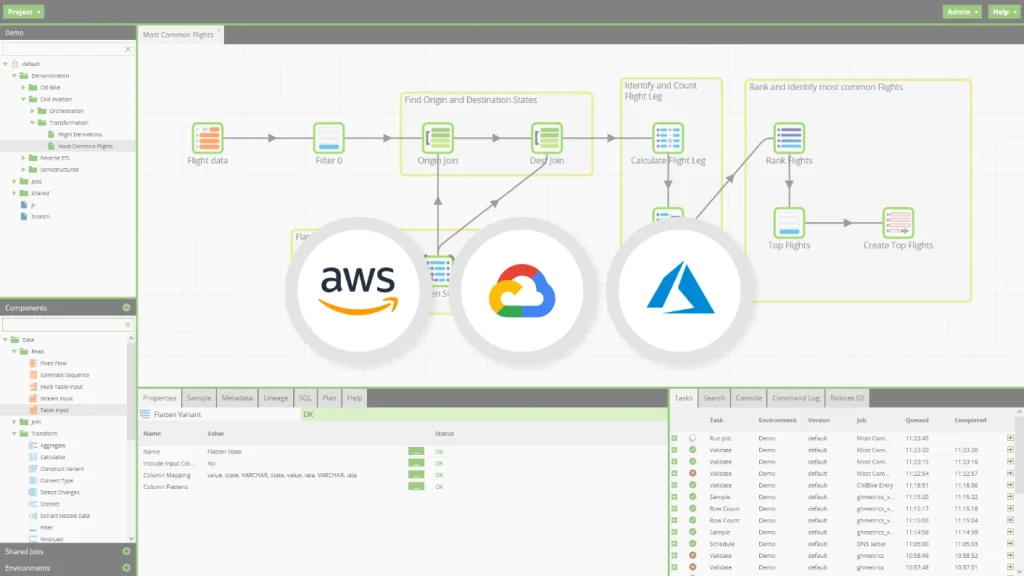
On the other hand, Matillion only accepts warehouse destinations and does not feed linked data into the visualization software. Scaling hardware infrastructure in Matillion is prone to issues when working at higher loads.
Overall, Matillion’s low-code ETL platform is best for database engineers who opt to construct a data model by combining many data sources into their data warehouse.
4. AppMaster
AppMaster is among the top low-code ETL tools capable of extracting, transforming, loading, and validating data.
AppMaster is a specialized software for automated data architecture and seamless data pipeline creation. With its PostgreSQL database, users can integrate, load, and convert data to desired formats without coding. Data integration processes with App Master can be managed quickly without losing quality and other factors.
Also, the interactive, easy-to-use UI design helps to extract data easier. Information is sorted into different dashboards for different facilities, making data accessible and saving time.
5. Microsoft Power Platform
The Power Platform of Microsoft contains Power Apps (the low-code development tools for any type of applications), PowerBI (a data management and visualization tool) and Power Automate (the automation tools for workflow management)
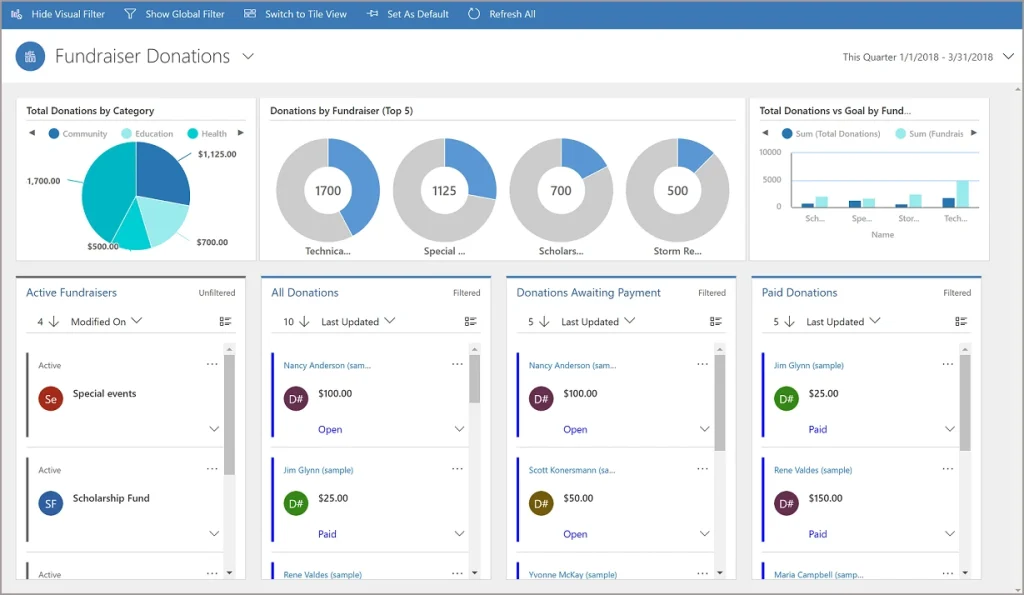
Combining the three tools, you will create a centralized data tool for management, ETL & analytics following the low-code technology. Easy to build, safe, and the ability to extract meaningful insights are the ultimate features of this low-code ETL tool.
How Microsoft Power Platform supports ETL:
- You can connect to various data source.
- Any data transformation is supported and written in M language.
- Support AI, machine learning, and cognitive services.
Businesses of all sizes choose Microsoft Power Platform for low-code development, ETL, and data analytics. To learn more about the Power Platform, we have reviewed it in terms of performance, features and extension in this blog!
To leverage the best low-code ETL, Synodus – Microsoft’s gold partner – offers in-depth consultation and seamless customization to build the best-suited ETL platform for your business.
Our well-versed experts are specialists in Big Data Service and Low-code Development Service, guaranteeing robust application and no fog of tech partnership throughout development. Get in touch with our team!
What popular languages to use for low-code ETL
- Python: Python is a general-purpose language with an extensive library of over 200,000 packages. Once you know how to read Python and its essential function, you can find databases, data analytics, and similar packages to find the needed material. Learning Python before using low-code ETL is great since it gives you a deep understanding of how technology functions.
- Java: Java is different from web-oriented JavaScript language and has a long history of working with ETL code. This coding language contains a lot of rules and commands, and you can quickly look it up in Java Programming Cheat Sheet. Once familiar with the code, you won’t need a diverse Java vocabulary for most ETL code.
- Scala: If you are looking for a concise coding language for your low-code ETL, Scale is the one. Scala was created as a rebuttal to Java, which can sometimes be a bit complicated. Its Programming Methods Laboratory makes the scaling suitable for your needs. Scala is easy, even for low-code ETL users. Consistent practice with Scala can help users develop essential skills for writing ETL instructions.
FAQs
Low code ETL can process data of all sizes and types. By leveraging automation scripts, data profiling, data governance, and data warehousing capabilities, users have unprecedented access to processing their most complicated datasets quickly and precisely.
Yes. Your organization can combine manual ETL and low code ETL for optimal advantages. Organizations can achieve superb data quality by integrating data governance capabilities, flexibility, and automation benefits.
The combination of low code ETL and manual ETL allows them more control over their processes while ensuring that their transformation efforts provide better results.
– Data sources and destination coverage;
– Data transformation abilities;
– Target audience;
– Pricing;
– Ease of use;
– Support and documentation.
Wrapping up
Low-code ETL tool outperforms its manual ETL companion in areas like ease of use and non-coding requirement. Still, users should be aware of some downsides of low-code ETL while using it. One engineer can utilize many tools, languages, and ETL types to leverage business strategy and data streamlining. Therefore, low-code ETL users and organizations carefully consider options that fit their objectives, financial capabilities, and available facility.
More related posts from Low-code blog you shouldn’t skip:
- Centralize Everything With Low-code Data Integration: Top 5 Tools
- 8 Low-code Database For Logical Management & Analytics
- 10 Best-to-use Low-Code AI Platforms For Automation & Analytics
How useful was this post?
Click on a star to rate it!
Average rating / 5. Vote count:
No votes so far! Be the first to rate this post.




